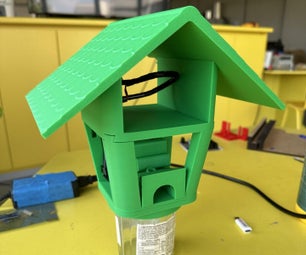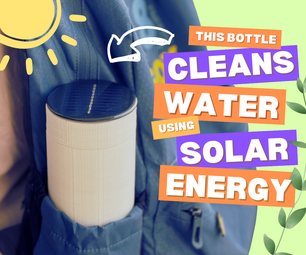Introduction: Use a Real Bread-Board for Prototyping Your Circuit
Today electronic enthusiasts use so called breadboards for prototyping their projects. These solderless breadboards do not require soldering and are reusable hundreds of times.
Okay, you might think, these plastic boards are boards, but where is the bread?
Read on in the next step to lift that secret.
Okay, you might think, these plastic boards are boards, but where is the bread?
Read on in the next step to lift that secret.
Step 1: History
In the early days of electronic engeneering radio and electronic freaks used real bread boards (litereally cutting boards for bread) to prototype their circuits.
Wikipedia: In the early days of radio, amateurs would nail bare copper wires or terminal strips to a wooden board (often literally a cutting board for bread) and solder electronic components to them.[1] Sometimes a paper schematic diagram was first glued to the board as a guide to placing terminals, then components and wires were installed over their symbols on the schematic. Using thumbtacks or small nails as mounting posts was also common.
You might think this neanderthal technique is obsolete, but there are still a few reasons to use it for example in educational contexts. But first let me show you how to build a circuit on a real bread cutting board.
Wikipedia: In the early days of radio, amateurs would nail bare copper wires or terminal strips to a wooden board (often literally a cutting board for bread) and solder electronic components to them.[1] Sometimes a paper schematic diagram was first glued to the board as a guide to placing terminals, then components and wires were installed over their symbols on the schematic. Using thumbtacks or small nails as mounting posts was also common.
You might think this neanderthal technique is obsolete, but there are still a few reasons to use it for example in educational contexts. But first let me show you how to build a circuit on a real bread cutting board.
Step 2: What You Need
Parts:
- a kitchen bread board
- a bunch of thumbtacks
- some wire
- an LED
- a switch
- a resistor (10k)
- a 9V batterie
- a soldering iron and solder
- a marker
- (optional) a hammer
Step 3: Draw the Circuit Diagram to the Board
The advantage of our breadboard over solderless breadboards is that you can simply build your circuit following the diagram. Draw the circuit diagram to the board.
Step 4: Stick the Thumbtacks
Now attach the tumbtacks to the boards. First stick one to every corner. Next stick two thumbtacks to the place where the electronic component will be added.
Step 5: Solder the Components
Solder the components to the thumbtacks. You may use a third hand tool for help. Soldering to thumbtacks i a little bit more difficult than soldering to a PCB. It takes more time to heat it up. If you're not sure about your solder joints, use your multimeter to check continuity.
Step 6: Add the Wire
When your components are in place its time to add the wires. Be careful not to desolder your components while heating up the thumbtacks again.
Attach your batterie and you are done.
Attach your batterie and you are done.
Step 7: Breadboarding on Real Bread Boards
So what are the advantages of kitchen bread boards? You can simply follow the circuit diagram building the circuit. This helps you to understand the circuit and learn how the parts work together. In several projects this technique is used to teach electronics to children.
You might think, this technique is limited to simple circuits like the one i demonstrate here, but even more complex circuits are possible. For example here you can see an AM radio built up using a breadboard and thumbtacks.
And its fun using an old way of prototyping.
I hope you enjoyed this instructable. Please share your thoughts and ideas in the comments.
You might think, this technique is limited to simple circuits like the one i demonstrate here, but even more complex circuits are possible. For example here you can see an AM radio built up using a breadboard and thumbtacks.
And its fun using an old way of prototyping.
I hope you enjoyed this instructable. Please share your thoughts and ideas in the comments.

First Prize in the
Unusual Uses: Kitchen Challenge











